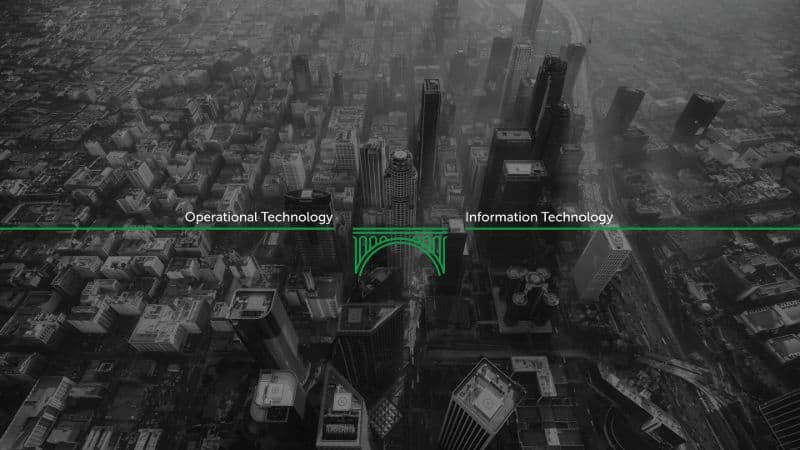Exploring the future of Brand Architecture

The traditional definition of brand architecture is structured, technical, and all about keeping things as buttoned-up as possible. But as brands have evolved, so have the questions, consumer needs, and experiential challenges that architecture helps to solve. No longer focused on tidiness and simplicity alone, modern architecture’s role has expanded to be more consumer-centric, with a goal not only to organize, but to help propel people through brand experiences in more intuitive, meaningful ways.
With a more human experience quickly becoming the new standard, it’s time to ask yourself: Is your brand architecture built for the future?
Learn More: Four Signs That You May Have A Brand Architecture Problem
From Structured to Strategic
Back in the day, architecture was viewed as a method of tidily structuring a brand’s services, departments, and offerings so audiences can easily navigate the portfolio. A successful strategy—often designed based on simplification needs only—cleared up the internal clutter by organizing into functional categories, clarifying hierarchies and streamlining the number of brands in a portfolio.
Today, future-fit brand architecture strategies are focused on solving strategic business challenges and aligning customer behavior with the overarching company vision. For example, using architecture to reinforce the brand story and key perceptions we want to drive, facilitate cross-selling and increase share of wallet, expand relevance to new audiences and markets, or even reposition the entire company. With more strategic and human objectives to address, modern architecture strategies need to be more flexible, consumer-centric, and responsive by design.
Take Schneider Electric as an example. With thousands of fragmented products creating a massively complex portfolio, this easily could have been a structural simplification exercise. However, the overarching goal was much more strategic: how can we rebuild our architecture strategy to reposition us from an OT company to an IoT company. This required elevating a tech stack that signaled innovation and creating an integrated suite of software, edge control and connected products.
Learn More: Schneider Electric Client Story
We elevated the EcoStruxure brand to represent one, connected platform that served as the connection point that allowed them to tell a much bigger innovation story, revealing the new and more meaningful role they could play in their customer’s lives. Further, adopting a more modular approach to products and services with flexibility to allow for redundant navigation enabled cross-selling, a transition from products to solutions, and a highly customized and personalized experience. While the end solution did result in a much more simplified and streamlined architecture, that was an outcome to a much more strategic and foundational problem we were solving.
From Navigation to Meaningful Connections
With a human lens and consumer-centric objective, modern architecture strategies can be viewed as a blueprint for moving people to and within your brand. In addition to helping people quickly and easily finding what they are looking for, the architecture should help solve bigger challenges for both existing and potential customers, including problems they didn’t even know they had.
To do so, you must have a clear understanding of the emotional motivators that drive choice and advocacy for your customers, and then build the architecture to meet those specific needs. This will help create meaningful connections that drive long-term value and loyalty. Ease of navigation and demonstrating breadth is only part of the equation; you must connect your architecture to how people buy, and how you want them to buy, in order to make an impact. By creating a meaningful, human portfolio experience, your brand can demonstrate that you are focused on solving their problems and delivering solutions tailored to their needs.
Take USAA as an example. Boasting deep brand loyalty and a reputation for being the world’s most customer-centric company, USAA has proven its commitment to putting people first in every decision. Through extensive research, we discovered that many people think about financial decisions through what is going on in their life rather than looking for specific products. The resulting architecture strategy leverages a simple life-stage approach, creating a flexible system that empowers the consumer to drive their own experience. Asking the question “What’s on your mind?”, USAA’s life-stage approach tailors its experience to individual consumer’s priorities—military life, family life, buying a first home, etc.—and delivers bundled solutions that meet those unique needs. This allows USAA to solve bigger, more holistic customer challenges in a way that feels like helpful, valuable guidance rather than being sold a bunch of products, all while reinforcing their overall human-centric brand.
“When you join USAA, you become part of a family who stands by you during every stage of your life.”
– USAA
From Customer-Focused to Bridging EX and CX
While architecture strategies are built with external audiences in mind, that doesn’t mean the internal experience is ignored. An effective architecture strategy considers and aligns internal behaviors with the desired external experience.
Learn More: Are we building brands, or are we building cultures?
When your portfolio is aligned to your brand purpose, it’s easier for employees to see themselves in that vision and understand the role they play in the consumer experience. It can help bring them into the story of what the brand is holistically working towards, instead of relegating them to just a siloed piece of the puzzle. Taking this kind of thoughtful, strategic approach to architecture can yield big changes internally. Not only can it rally people together under a shared brand mission, it can also transform what that mission is entirely.
This approach will also help you work around potential organizational structure issues as well. There is a saying in this world that brand architecture does not equal organizational structure. And for the most part that is true. However, if your structure prevents you from delivering on your brand strategy, or limits how far you can go, there are going to be significant disconnects in what you say vs what you do.
Dow nails this objective. Wanting to move beyond selling individual chemicals, Dow wanted to be viewed more as a solutions company accelerating human progress. However, their complex and silo’d structure organized by types of chemicals made this very difficult to operationalize. With a new architecture strategy focused on market segments and trends, it became clear that success was going to depend on the ability to drive more integrated behaviors despite the org structure. By using pilot programs that brought these various business groups together for the first time with a common customer-focused objective, they were able to gain a strong understanding for how they could better work together, and even innovated new products and capabilities. So much untapped value can be found by simply clarifying the vision, bringing people together, and empowering them to deliver on it.
Interested in seeing more of our work in Brand Architecture? Visit our portfolio page here.
Building For the Future
When evaluating or revisiting your brand architecture today, be sure to use a future-focused lens. It’s not just about being neat and tidy anymore—today, your architecture can help set the tone for your entire brand experience, attracting new customers, solidifying relationships with current ones, and unleashing the power of your people. Done right, architecture can serve as a strategic blueprint for your brand experience, mapping directly to your consumer’s journey, needs, and behaviors.
Consumer research can help you identify where your current architecture is delivering—or failing to—the right touchpoints within your experience. Start by identifying the gaps, and the opportunities to help people move more seamlessly through their journey. Also conduct some scenario-planning exercises to better understand how the organization will continue to grow, organically and through acquisition, so you can pave the way to that bigger picture. When you focus on building a portfolio through this consumer-centric perspective, every decision is an opportunity to maximize value, increase brand loyalty and advocacy, and drive reputation for great experiences.
Have questions about building a modern brand architecture strategy? We’re here to help. Let us know what challenges you’re facing by reaching out to us here.








